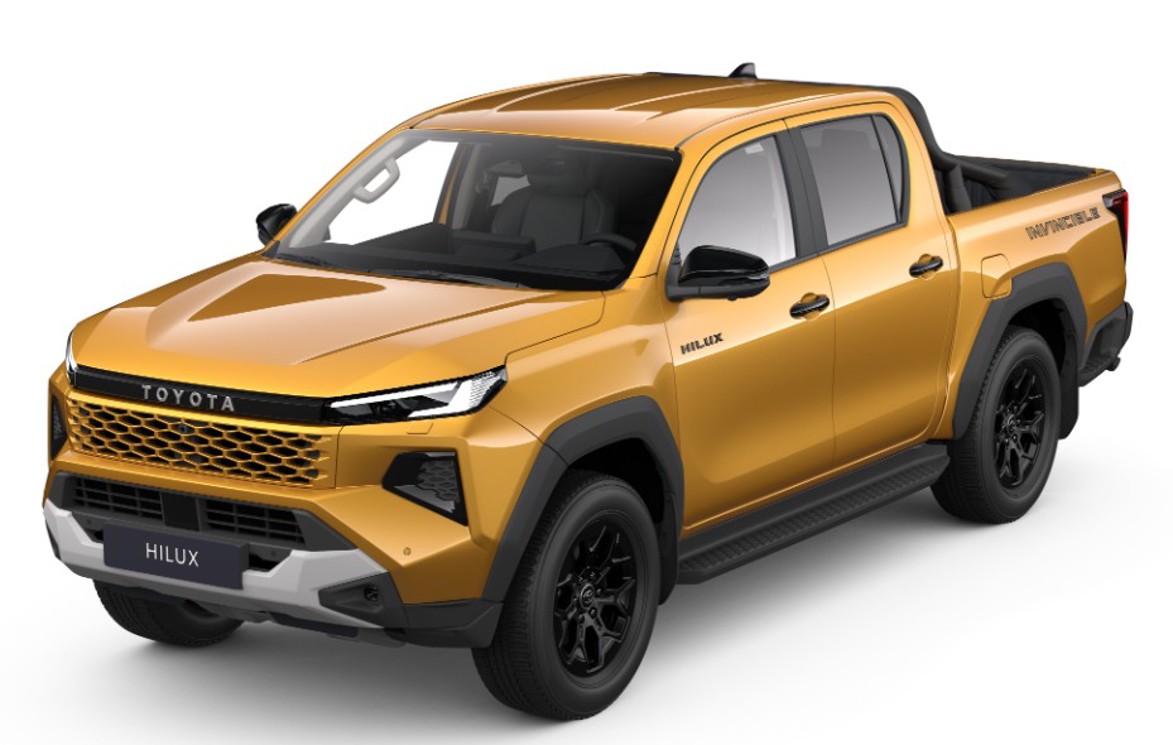- 'Cyber Sumo' styling for 2026 Toyota Hilux.
- Carryover diesel engines, but a BEV is on the way.
- Hilux celebrates its 50th in NZ next year.
Toyota has revealed its 9th-generation Hilux ute, with the introduction of a pure-electric (BEV) version for the first time. The company has also confirmed a fuel cell electric vehicle (FCEV) powertrain is in development.

Toyota Australia has played a key role in much of the design and testing of the Kiwi-specification Hilux,which has taken place over the past four years. The initial Kiwi lineup will include SR, SR5 Limited and a new Adventure version. It will arrive as Hilux celebrates its 50th year in NZ, in 2026.
While there is strong interest in the current wide-track versions (SR5 Cruiser and GR Sport), Toyota New Zealand (TNZ) says there will not be direct replacements for those models in the new lineup - at least not to begin with.
TNZ says it expects to share more detail about the launch of the Hilux BEV early in 2026 (keep reading for battery and motor specifications). The FCEV is confirmed for Oceania, but won't arrive until 2028.
The new Hilux's exterior design
Toyota says the look of the new 'Lux was inspired by a "Cyber Sumo" theme. It features slimline headlights and sharp lines.

The rear now has a step integrated into the tailgate. The new wellside design introduces smoother contours, wrap-around taillights, an integrated tailgate handle with assist system, a pressed Toyota logo, and a centrally positioned reversing camera.
The new Hilux will be available in Glacier White, Tensile Silver, Ash, and Eclipse, with select versions offered in Emotional Red. The Adventure introduces exclusive shades: Sulphur and Frosted White.
Inside the new Hilux
Inside, the new three-tier instrument panel sits flatter than before. Every Hilux now features a digital instrument cluster: 7.0-inch display for the SR and a 12.3-inch unit for SR5, SR5 Limited and the new Adventure version.

A 12.3-inch multimedia touchscreen is fitted to all models, including wireless Apple CarPlay and Android Auto.
Key controls retain push switches and dials, some repositioned for easier access. For example, all four-wheel-drive controls are now located ahead of the shifter.
Powertrain and performance
TNZ has confirmed it will offer the new Hilux at launch with a choice of 12 diesel and hybrid-diesel variants in 2WD, 4WD, single cab, extra cab, and double cab with both the cab-chassis and wellside options. The diesel engines are carried over, as are the 6-speed automatic and manual-transmission options.

Dyanmic changes to Hilux include electric power steering on all models and more refined suspension tuning for the SR5 and higher versions. A new version of the Multi-Terrain Select (MTS) traction control is fitted to "most" automatic SR 4x4s and above.
The new pure-electric Hilux
The forthcoming BEV version is less of a workhorse than its diesel siblings, with a projected payload of 715kg and tow rating of 1600kg (both figures to be confirmed following homologation).

But Toyota claims uncompromised off-road capability from the BEV, with a bespoke MTS system that adapts vehicle performance to suit different off-road situations using brake and torque control, equivalent to driving in L4 range in a conventional diesel Hilux.
It retains the body-on-frame construction and is engineered for off-road performance, including specific measures to protect the battery from damage or water ingress. The wading depth is equal to the current ICE model.
The powertrain features a 59.2kWh lithium-ion battery and front and rear eAxles providing permanent all-wheel drive, with 205Nm at the front and 268.6Nm at the rear.













